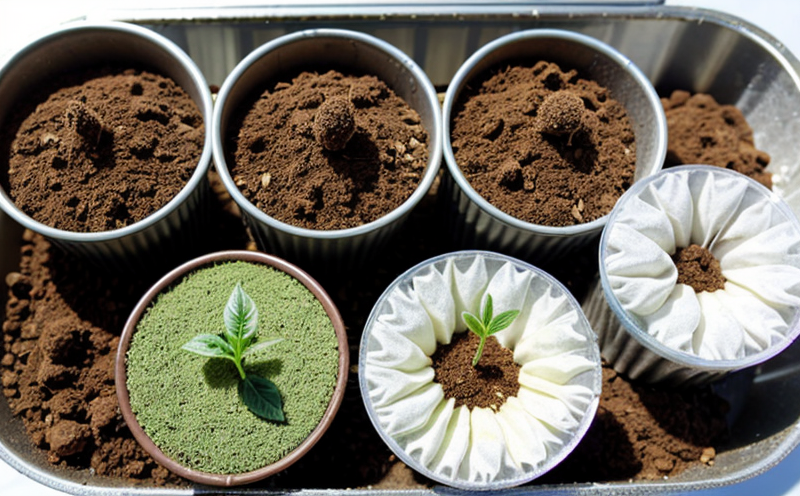Seed Purity Analysis Testing
The integrity of seeds is critical to agricultural productivity and sustainability. Seed purity analysis testing ensures that seed lots meet quality standards by identifying any foreign matter or contamination, including other crop species, weeds, or inert materials. This service plays a vital role in maintaining the genetic purity and viability of seeds for planting, thereby supporting successful crop yields.
Seed purity is not only important from an agricultural standpoint but also has broader implications for environmental sustainability and economic efficiency. By ensuring that seed lots are free from contaminants, farmers can optimize their planting practices, reduce waste, and enhance profitability. This service supports the supply chain by providing reliable data on seed quality which can be used to make informed decisions regarding procurement.
When conducting seed purity analysis testing, it is essential to use standardized methods and equipment to ensure accurate results. The process typically involves a series of steps including sample preparation, visual inspection, and specialized laboratory analyses. These techniques help in identifying the presence of undesirable materials that could affect germination rates or crop health.
The importance of seed purity cannot be overstated, especially given the growing demand for sustainable agricultural practices worldwide. Ensuring that seeds are free from contamination helps to preserve biodiversity, supports ecosystem health, and contributes to long-term environmental sustainability. In addition, accurate testing enhances market confidence by providing transparent data on product quality.
In summary, seed purity analysis testing is a cornerstone of modern agricultural practice, supporting both short-term operational efficiency and long-term ecological balance. By investing in this service, stakeholders can ensure they are working with the highest quality seeds available, fostering successful harvests and sustainable practices.
Scope and Methodology
The scope of seed purity analysis testing encompasses a comprehensive evaluation process designed to identify and quantify any foreign matter or contamination within seed lots. This includes not only plant materials but also other inert substances that might compromise the quality and viability of the seeds.
| Step | Description |
|---|---|
| Sample Collection | The first step involves collecting representative samples from the seed lot. These samples are then prepared for analysis, ensuring they are free from external contaminants. |
| Visual Inspection | This initial inspection helps to identify any obvious foreign matter or contamination that could be easily detected by the naked eye. |
| Micromorphological Examination | A more detailed examination using microscopes allows for the identification of smaller particles and structures, providing a deeper understanding of the seed composition. |
| Chemical Analysis | Advanced chemical tests can be conducted to detect any residues or impurities that may not be visible through other means. |
| Data Compilation and Reporting | The final step involves compiling all findings into a comprehensive report, which details the purity level of the seed lot and provides recommendations for improvement if necessary. |
Throughout this process, strict adherence to international standards such as ISO 3682-1:2017 is crucial. These guidelines ensure consistency and reliability in the testing procedures, thereby enhancing the credibility of the results.
Environmental and Sustainability Contributions
The practice of seed purity analysis contributes significantly to environmental sustainability by ensuring that only high-quality seeds are used for planting. This reduces the likelihood of crop failure due to contamination or genetic impurities, which in turn minimizes waste and supports efficient resource use.
By promoting the use of pure seeds, this service helps maintain biodiversity within agricultural ecosystems. Pure seed lots contribute to a more resilient environment by fostering healthier plant growth, which can enhance overall ecosystem health. Furthermore, the use of clean seeds reduces the need for chemical treatments, thereby lowering environmental impacts associated with pesticide use.
The commitment to purity also aligns with broader sustainability goals by supporting sustainable agricultural practices. This service helps ensure that farmers are working with the best possible materials, optimizing their yields and contributing positively to global food security efforts. In this way, seed purity analysis plays a crucial role in promoting both economic prosperity and environmental health.
Competitive Advantage and Market Impact
The ability to provide accurate and reliable seed purity analysis offers significant competitive advantages in the agricultural sector. By ensuring that only high-quality seeds are used, businesses can enhance their reputation for delivering superior products, which in turn builds customer trust and loyalty.
Clients who use this service benefit from increased marketability of their offerings. Purity-certified seeds command higher prices due to their premium quality, making them more attractive to buyers looking for the best possible performance. This enhances profitability by allowing businesses to charge premium rates without compromising on value.
The use of pure seeds also supports sustainable agricultural practices, which are increasingly important in today’s market. Consumers and purchasers are becoming more aware of the environmental impact of their choices, leading to a growing demand for products that meet stringent sustainability standards. By providing this service, businesses can position themselves as leaders in responsible sourcing and production, thereby gaining a competitive edge.
In conclusion, seed purity analysis testing is not just a technical requirement; it is a strategic asset that contributes to both short-term operational efficiency and long-term market success. This service supports the supply chain by providing reliable data on seed quality which can be used to make informed decisions regarding procurement, thereby enhancing overall business performance.





